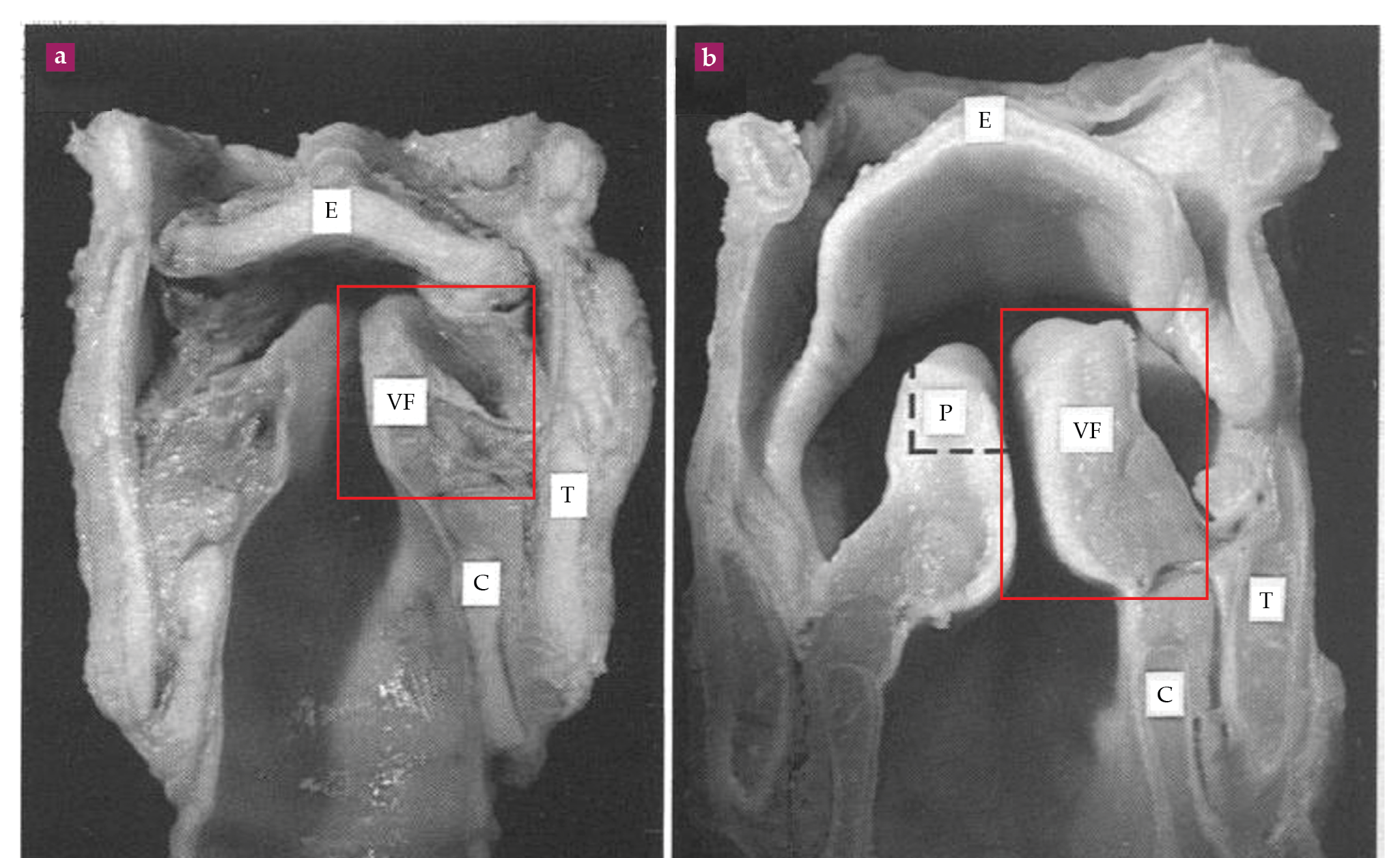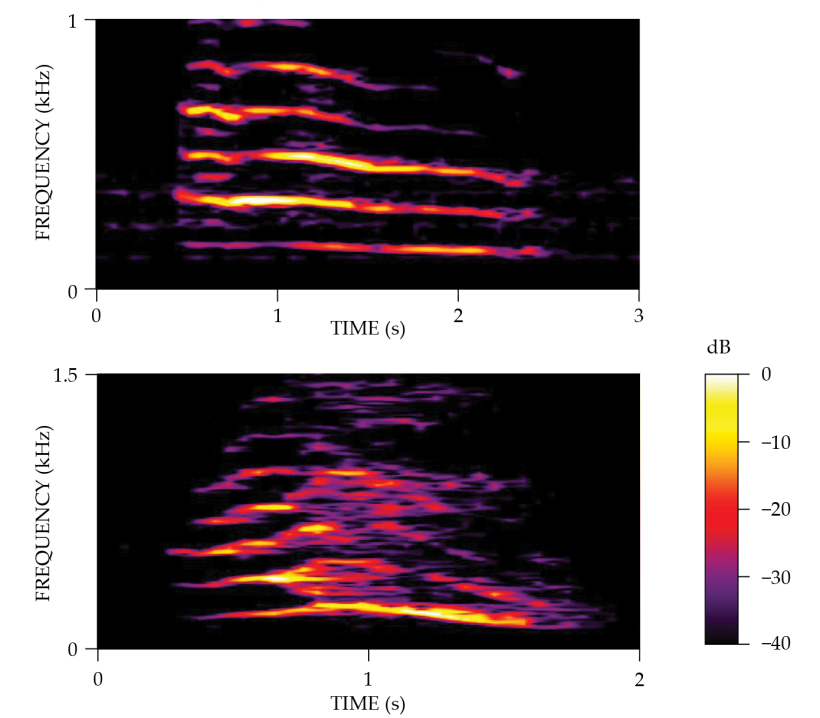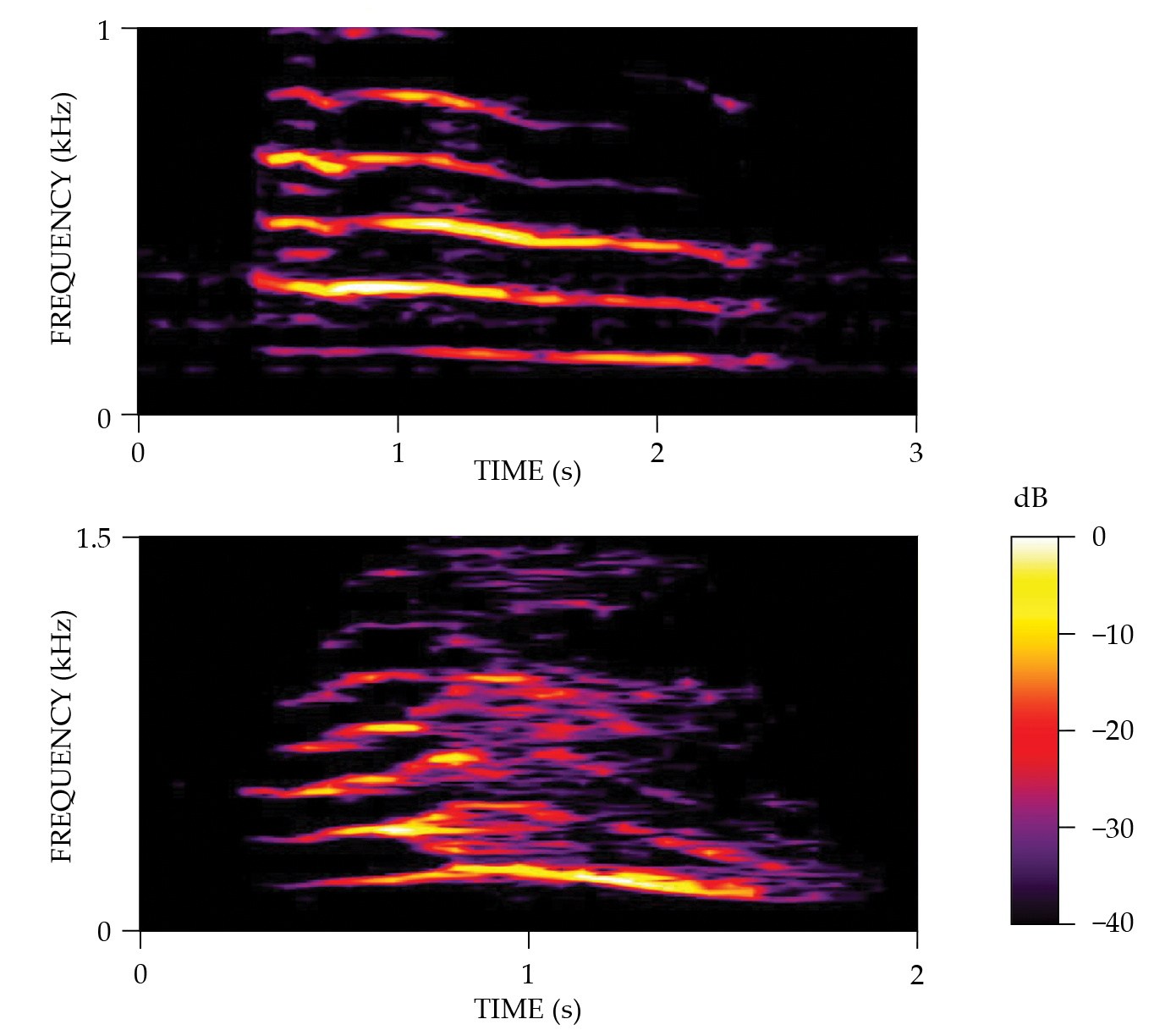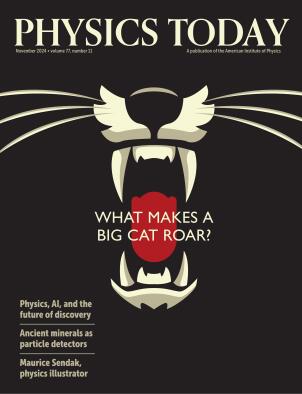What makes a big cat roar?
DOI: 10.1063/pt.ytfo.thhj
Imagine that you’re sitting around a campfire in the Far Eastern taiga in the dark predawn hour, when a spine-chilling cry suddenly echoes through the awakening forest. It is the mournful-sounding call of a Siberian tiger: a deep-throated, mesmerizing ahh-rooom. Known as the long-distance advertisement call, its purpose is to draw attention to the animal’s location, size, and fitness. The call is intense, and it delivers a clear message to prospective mates and adversaries alike: I am here, and this is my dominion.
Only four of the five big cats belonging to the genus Panthera can roar: tigers, lions, leopards, and jaguars. The differences between roaring and nonroaring cats can be appreciated by comparing the vocal hardware of the nonroaring fifth cat in Panthera, the snow leopard, with the considerably larger hardware of the jaguar. The size difference between their voice boxes, shown in figure
Figure 1.

Big-cat voice boxes. The voice box of (a) the nonroaring snow leopard has triangular-shaped vocal folds (VF), while that of (b) the roaring jaguar, along with other roaring big cats, has large rectangular-shaped vocal folds. Also pictured are the epiglottis (E), thyroid cartilage (T), cricoid cartilage (C), and pad (P) of fibroelastic tissue. (Adapted from M. H. Hast, J. Anat. 163, 117, 1989.)

The voice box
The functional center of mammalian vocalization lies in the larynx, a cartilaginous structure that is connected to the trachea (or windpipe) below, and to the pharynx (or throat) above. The pharynx expands into the nasal and oral cavities and, in some species, also into a collection of other mucosal membrane–lined air chambers. Those interconnected spaces function in the same way the bell of a trumpet helps radiate sound: They collectively shape the output of the cat’s vocal system.
The fundamental structural element of voicing is a bilateral pair of laryngeal protrusions known as vocal folds, commonly referred to as vocal cords. Together they create an opening in the middle of the airway known as the glottis. The epiglottis, shown in figure
Like all voiced sounds, long-distance roaring is produced during exhalation as warm, moist air flows through the glottal aperture. The air flow sets the vocal folds into vibration at their resonant frequency. Glottal pulses formed by the vibrations are transferred to the oral cavity and associated nasal cavities, where the emergent voice is shaped.
Aerodynamic efficiency
As seen in figure
Two spectrograms displaying tiger advertisement calls are seen in figure
Figure 2.

Two examples of spectrograms of a tiger’s long-distance advertisement call, which illustrate the harmonic nature of the roar and its aperiodic components.

But the size of big-cat vocal hardware is not the only reason why the cats can produce the long-distance roar. Adaptations in the shape of their vocal apparatus are another crucial factor. Roaring-cat vocal folds are square or rectangular in shape. Those of other mammals, including nonroaring cats, are typically triangular. Rectangular-shaped vocal folds, with their thick and compact medial surfaces abutting one another, are more aerodynamically efficient than triangular ones, and that higher efficiency manifests in the form of a wide range of output levels. At the low end of the range, rectangular-shaped folds support the production of remarkably low phonation thresholds. In other words, a relatively small amount of lung pressure can vibrate the vocal folds and produce low-level sounds. At the high end, powerful contractions of thoracic muscles and the diaphragm help produce intense big-cat roars.
Roaring-cat vocal folds are also resilient to the powerful forces produced by intense vocalizations. That is due in part to a unique anatomical feature: fat deposits deep in the body of the vocal folds that not only influence their shape but also function as a cushion to absorb deformations associated with the extreme vibrations that occur during roaring. In addition, the vocal folds’ epithelium intertwines with the underlying connective tissue to produce a large surface area that strengthens the vocal-fold tissue when it undergoes extreme mechanical stress. As a result, roaring-cat vocal folds possess a remarkable capacity to withstand powerful shearing and stretching forces that would injure those of species with less robust vocal hardware.
Our understanding of the physics of roar production is derived in large part from tissue engineering and biomechanics investigations. But roaring also illustrates how slow-moving evolutionary pressures have caused subtle but essential changes in a small cluster of tissues lining a modest stretch of the larynx that enables production of the long-distance roar.
References
► M. H. Hast, “The larynx of roaring and non-roaring cats,” J. Anat. 163, 117 (1989).
► A. Ji et al., “Discrimination of individual tigers (Panthera tigris) from long distance roars,” J. Acoust. Soc. Am. 133, 1762 (2013). https://doi.org/10.1121/1.4789936
► S. A. Klemuk et al., “Adapted to roar: Functional morphology of tiger and lion vocal folds,” PLoS One 6, e27029 (2011). https://doi.org/10.1371/journal.pone.0027029
► I. R. Titze et al., “Vocal power and pressure–flow relationships in excised tiger larynges,” J. Exp. Biol. 213, 3866 (2010). https://doi.org/10.1242/jeb.044982
► I. Titze, T. Riede, T. Mau, “Predicting achievable fundamental frequency ranges in vocalization across species,” PLoS Comput. Biol. 12, e1004907 (2016). https://doi.org/10.1371/journal.pcbi.1004907
More about the Authors
Ed Walsh is the director and JoAnn McGee is the codirector of the Auditory Neurobiology Laboratory at the VA Loma Linda Healthcare System in Loma Linda, California. Their research focuses on the intersection of biomedicine and bioacoustics.


